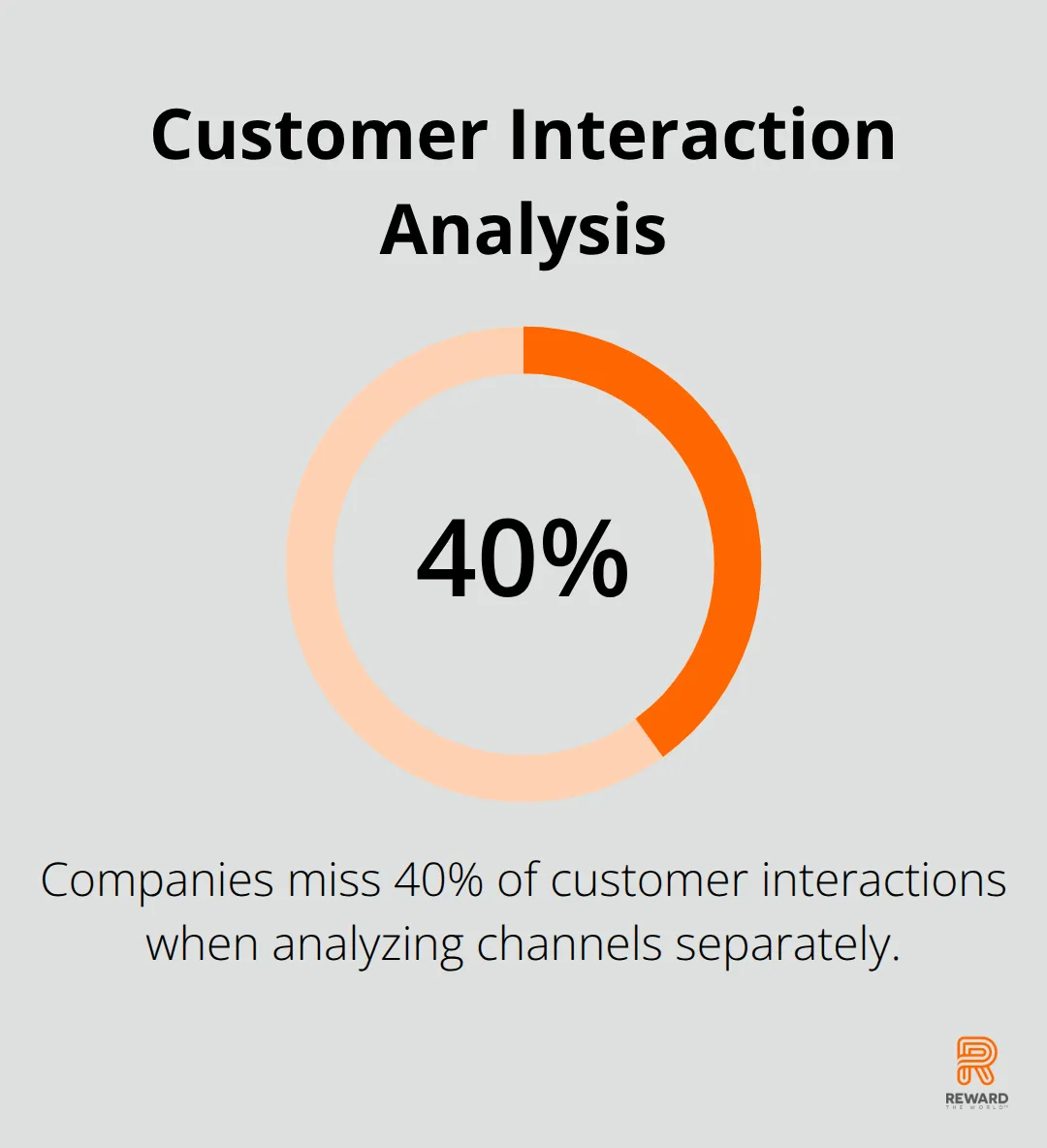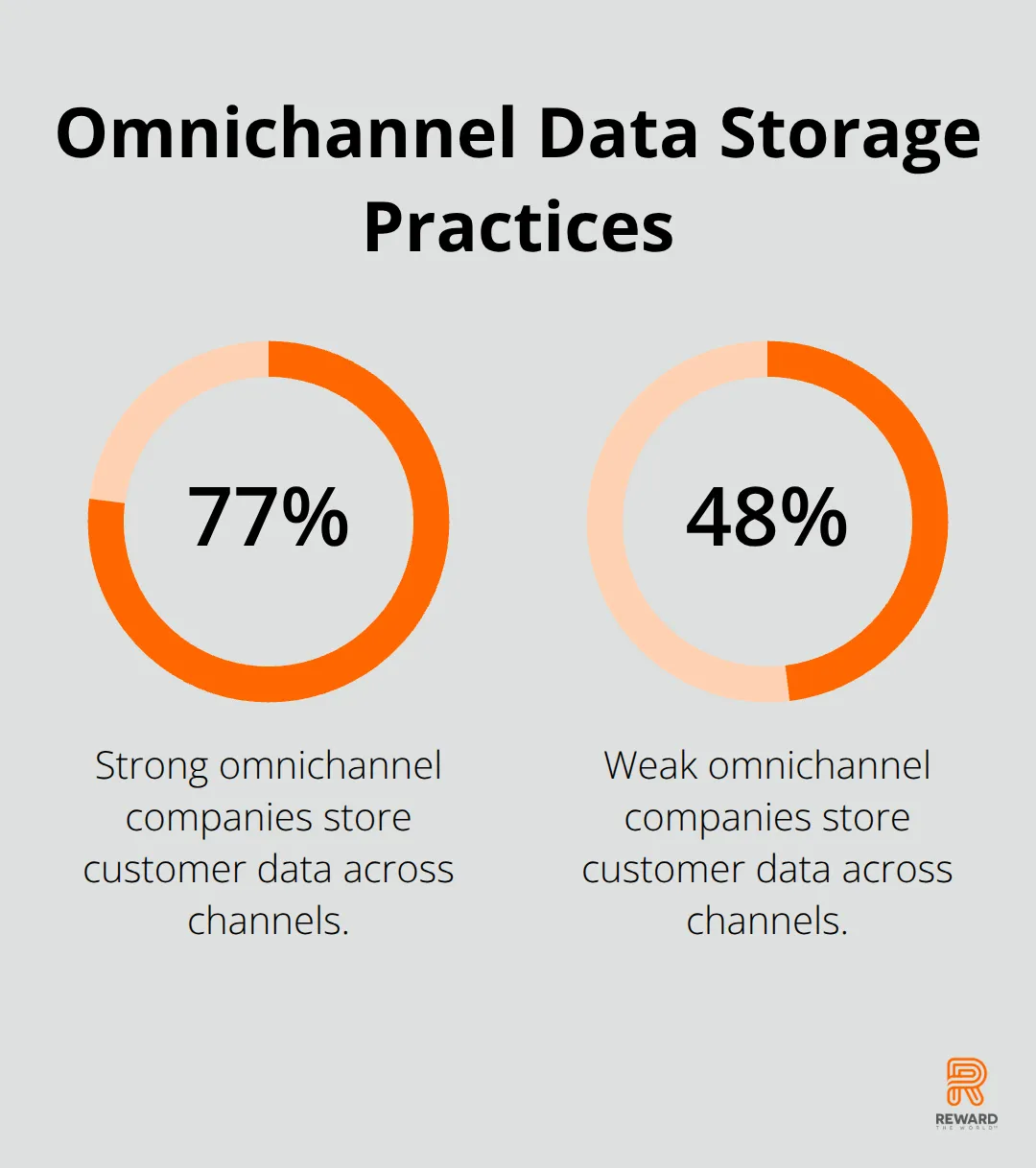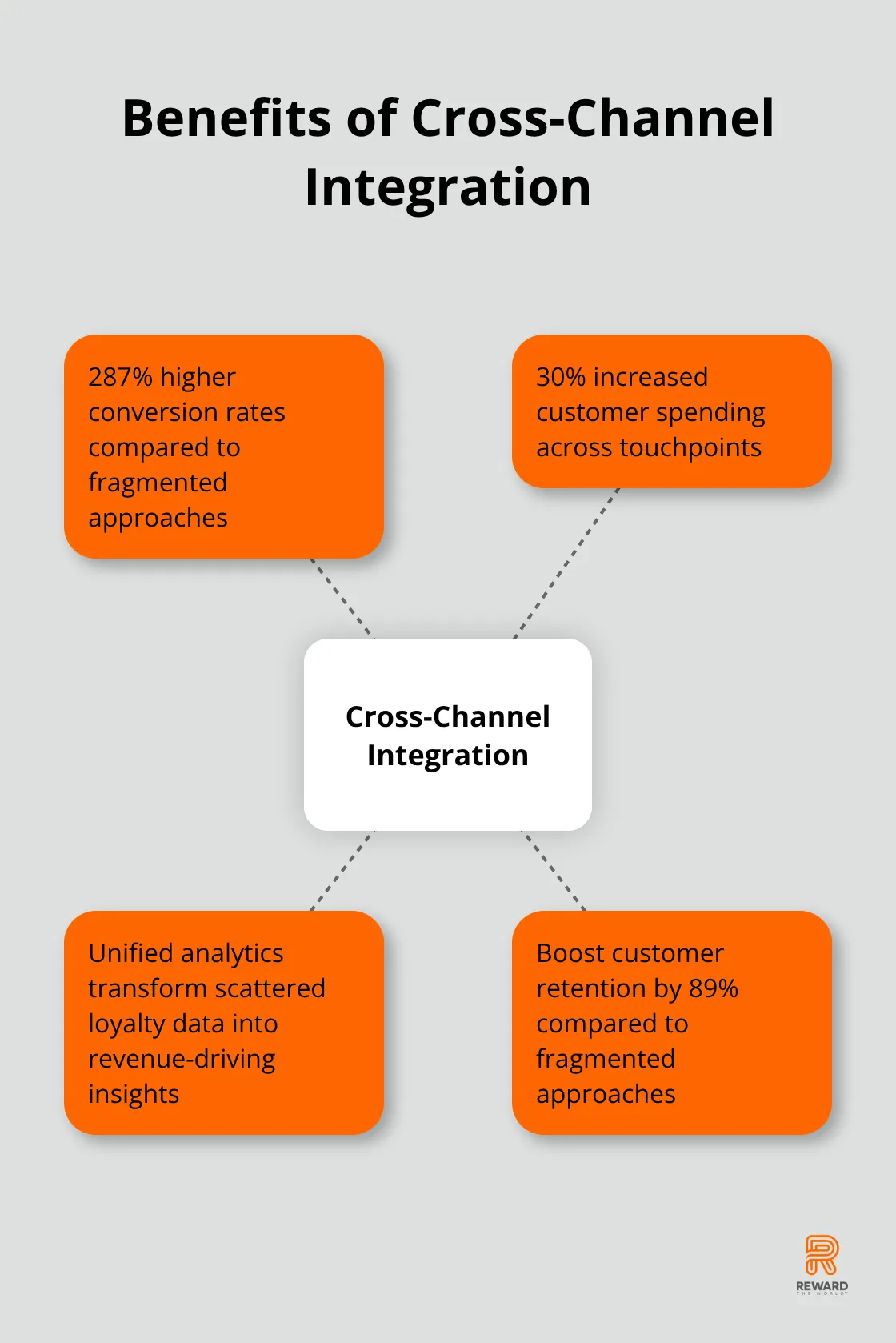
Customer loyalty data scattered across multiple channels creates blind spots that hurt your program’s performance. Most businesses collect information from websites, stores, and mobile apps but struggle to connect these touchpoints into a complete picture.
We at Reward the World see companies miss 40% of customer interactions when they analyze channels separately. Unified analytics transforms fragmented data into actionable insights that drive real results.

What Data Sources Feed Your Cross-Channel Strategy
Online Behavioral Tracking Beyond Basic Metrics
Website analytics capture more than page views and clicks. Heat maps show where customers spend time before they purchase, while scroll depth reveals content engagement patterns. Exit-intent data identifies friction points that cause 70% of cart abandonment cases. Session recordings expose navigation struggles that traditional metrics miss.
Search query data from your site reveals customer intent, while referral sources show which channels drive highest-value traffic. Email engagement rates combined with website behavior create predictive models for purchase likelihood. Social media interactions linked to website sessions show how brand conversations influence buying decisions.
In-Store Intelligence That Connects to Digital
Point-of-sale systems generate transaction timestamps that reveal peak shopping hours and seasonal patterns. Purchase combinations show cross-selling opportunities that boost average order value. Payment method preferences indicate customer demographics and spending power.
Return patterns highlight product satisfaction levels and quality issues. Staff interaction notes capture customer service touchpoints that influence repeat purchases. Location-based data from mobile check-ins connects physical visits to digital engagement. Inventory turnover rates per customer segment guide personalized product recommendations.
Mobile App Data That Powers Real-Time Decisions
Push notification response rates average 4.6% but vary dramatically based on message timing and personalization. App session duration correlates with purchase probability more strongly than frequency alone. Feature usage patterns reveal customer preferences that inform product development.
Location permissions enable proximity marketing that increases store visits by 25%. In-app search behavior predicts future purchase categories with 83% accuracy. Crash reports and user feedback identify technical barriers to conversion. Offline app usage shows engagement during network outages or travel periods.
Social Media and Review Platform Insights
Social media mentions provide sentiment analysis that predicts brand loyalty shifts. Review platform data (including star ratings and comment themes) reveals product satisfaction trends across different customer segments. User-generated content engagement rates show which products generate authentic advocacy.
Social commerce transactions track the complete path from social discovery to purchase completion. Influencer collaboration metrics demonstrate which partnerships drive actual sales versus vanity metrics.
These diverse data streams create the foundation for understanding customer behavior patterns. The next step involves connecting these touchpoints to map complete customer journeys from first contact through repeat purchases.
How Do You Connect Customer Touchpoints Into Complete Journeys
Customer journey mapping requires specific attribution models that assign conversion credit across multiple touchpoints. First-touch attribution shows which channels generate initial awareness, while last-touch reveals closing channels. Multi-touch attribution distributes credit proportionally and provides accurate channel performance data.
Google Analytics 4 uses data-driven attribution that looks at user history and conversion events to determine which are most important for a given conversion. This approach reveals how different touchpoints contribute to the customer journey across multiple interactions.
Attribution Models That Track Real Channel Impact
Different attribution models reveal distinct insights about channel effectiveness. Linear attribution spreads credit equally across all touchpoints, while time-decay models give more weight to recent interactions. Position-based attribution assigns 40% credit to first and last touches, distributing the remaining 20% among middle interactions.
Data-driven models analyze historical conversion data to calculate each channel’s true influence. These models provide more accurate insights than traditional last-click attribution by considering the full conversion path. Cross-channel interactions create synergistic effects that single-touch models cannot capture effectively.
Behavioral Segments That Drive Revenue Growth
High-value segments emerge from behavioral patterns rather than demographics alone. Research shows that 77% of strong omnichannel companies store customer data across channels, compared to 48% for weak omnichannel companies. Purchase frequency combined with channel diversity creates four distinct segments: omnichannel advocates, digital-first buyers, store loyalists, and channel switchers.

Omnichannel advocates represent a smaller percentage of customers but generate disproportionate revenue. These customers respond to personalized cross-channel campaigns with higher conversion rates. RFM analysis identifies at-risk high-value customers who need immediate retention campaigns before they churn.
Channel-Specific Lifetime Value Calculations
Customer lifetime value varies dramatically by acquisition channel and engagement pattern. Email-acquired customers often show higher CLV than social media acquisitions, while referral customers typically exceed both significantly. CLV calculations multiply the average annual profit of a customer by the average duration of customer retention.
Customers acquired through loyalty programs maintain higher retention rates compared to single-channel approaches. Mobile app users generate significantly more lifetime value when they also engage with email campaigns. These calculations guide budget allocation decisions that maximize long-term profitability rather than short-term conversions.
The technology stack you choose determines how effectively you can collect, integrate, and analyze this cross-channel data to drive actionable insights.
What Technology Stack Powers Cross-Channel Data Integration
Customer data platforms serve as the central nervous system for cross-channel loyalty programs, but the wrong choice costs companies significant investment in redundant point solutions. Segment leads the CDP market with real-time data capabilities that process over 20 billion API calls monthly, while Adobe Experience Platform excels at identity resolution across 500+ data sources. Salesforce Customer 360 integrates natively with existing CRM systems and reduces implementation time compared to standalone solutions. These platforms unify customer profiles through machine learning algorithms that achieve high accuracy rates in identity matching.
Real-Time Analytics That Drive Immediate Action
Modern loyalty programs demand fast response times for personalized offers and real-time campaign adjustments. Mixpanel processes event data within 100 milliseconds and enables instant trigger campaigns based on customer behavior. Google Analytics 4 provides cross-platform measurement but struggles with real-time personalization due to data processing delays. Amplitude specializes in behavioral analytics with cohort analysis that identifies customer segments faster than traditional tools. These platforms integrate with marketing automation systems through webhooks that trigger personalized messages within seconds of specific customer actions.
API Architecture That Eliminates Data Silos
RESTful APIs form the backbone of successful cross-channel integration, with GraphQL gaining popularity for complex data relationships. Zapier connects over 5,000 applications without custom code, while MuleSoft handles enterprise-grade integrations with guaranteed 99.9% uptime. Custom API development costs $50,000-$200,000 but provides unlimited flexibility for unique business requirements. Event-driven architectures that use Apache Kafka process millions of loyalty transactions per second with zero data loss. AI breaks down data silos, combining information from various touchpoints to create a comprehensive view of customer preferences.
Data Synchronization Methods That Maintain Accuracy
Webhook implementations reduce data latency by 80% compared to batch processing methods and enable real-time reward delivery across all channels. ETL processes run on scheduled intervals (typically every 15-30 minutes) but create data gaps that affect customer experience. Real-time streaming solutions like Amazon Kinesis handle millions of events per second with sub-millisecond latency. Data validation rules prevent duplicate records and maintain data quality across all integrated systems, while automated error handling resolves 90% of synchronization issues without manual intervention. Data integration powers personalization through robust Customer Data Platforms that consolidate information from all sources.
Final Thoughts
Unified analytics transforms scattered loyalty data into revenue-driving insights that boost customer retention by 89% compared to fragmented approaches. Companies that implement cross-channel integration see 287% higher conversion rates and 30% increased customer spending across touchpoints. Success requires you to start with three core channels before expansion, implement robust attribution models, and maintain consistent data quality standards.

Real-time synchronization prevents the data gaps that cause customer experience failures, while proper identity resolution connects customer interactions across all platforms. The technology foundation matters significantly because customer data platforms reduce implementation costs (they eliminate redundant point solutions), while API-driven architectures provide the flexibility needed for future growth. Companies should prioritize platforms that offer sub-second response times for personalized reward delivery.
We at Reward the World have seen businesses achieve remarkable results when they move beyond siloed analytics. Our global incentives platform processes cross-channel interactions daily and delivers instant rewards while maintaining GDPR compliance and providing robust analytics that drive program optimization. The next step involves selection of your initial channel mix, implementation of proper tracking parameters, and establishment of baseline metrics for continuous improvement.
